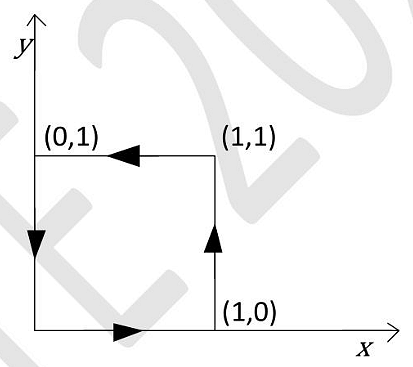Question:
\((A-B)∪(B-A)=\)
\((A-B)∪(B-A)=\)
Updated On: Apr 6, 2025
- \(A∪B\)
- \(A∩B\)
- \(\phi\)
- \((A∪B)-(A∩B)\)
Hide Solution
Verified By Collegedunia
The Correct Option is D
Solution and Explanation
We are given the expression \( (A - B) \cup (B - A) \), which represents the union of two sets:
\( A - B \) refers to the elements in \( A \) but not in \( B \),
\( B - A \) refers to the elements in \( B \) but not in \( A \). The union of these two sets includes all elements in \( A \) that are not in \( B \), plus all elements in \( B \) that are not in \( A \). Now, the expression \( (A \cup B) - (A \cap B) \) gives us all elements in either \( A \) or \( B \), except the elements that are in both \( A \) and \( B \) (i.e., the intersection). Thus, the solution simplifies to: \[ (A - B) \cup (B - A) = (A \cup B) - (A \cap B) \]
The correct option is (D): \((A∪B)-(A∩B)\)
Was this answer helpful?
0
0
Top Questions on Sets
- Mode of the data \( 19, 2, 6, 12, 12, 3, 5, 6, 18, 14, 6, 17, 2 \) is:
- The mean and mode of 5, 3, 9, 1, 9, 8, 9, 4 are m and n respectively, the value of m+n is?
- If A = {1, 2, {3, 4}, 5}, then which of the following is incorrect?
- If A and B are the two sets containing 3 and 6 elements respectively, then what can be the maximum number of elements in A∪B?
- For \(\vec{F}=(x+y)\hat{i}+(x+y)\hat{j}\) the value of \(\oint\vec{F}.d\vec{r}\) along the path shown in the figure is ________. Give your answer as an integer.

View More Questions
Questions Asked in AP POLYCET exam
- Ram and Syam are friends. Probability that both will have same birthday is:
- AP POLYCET - 2025
- Probability
- If the speed of light in glass is $ 2 \times 10^8 \, m/s $ and the speed of light in air is $ 3 \times 10^8 \, m/s $, the refractive index of glass with respect to air is:
- AP POLYCET - 2025
- Refraction of Light
- The solution of \( x - 2y = 0 \) and \( 3x + 4y - 20 = 0 \) is:
- AP POLYCET - 2025
- Linear Equations
- A prime number \( p \) divides \( a^2 \) where \( a \) is a positive integer, then
- AP POLYCET - 2025
- Prime and Composite Numbers
- Area of a sector of a circle with radius 4 cm and angle 30° is (use \( \pi = 3.14 \)):
View More Questions